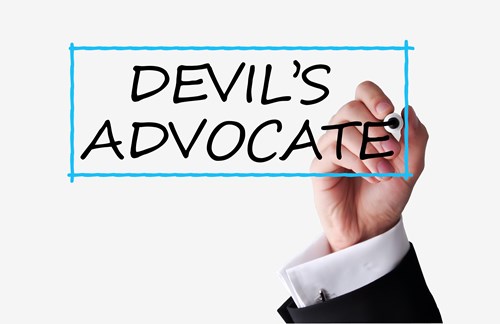Meetings are a gathering of people brought together to exchange and present information. It is a chance to showcase your knowledge, share ideas, throw your support behind the ideas of others and to voice any objections. Often, people get spoken over or ideas are dismissed without fair attention and that’s enough to make anybody reluctant speak up, or even go to them.
However, if you prepare yourself before every meeting, you have more chance of making effective changes. If you are not focused enough when listening, you will miss important points and key actions that are beneficial to you. Most importantly, if you have something important to raise, it is best to do it right the first time. Following these 5 points will enable you to best present your ideas.
Be the bread not the filling…
The ‘recency effect’ means it is bad for your idea to be the filling in a sandwich. Studies show people recall items in certain orders. Ideas mentioned last are remembered first, followed by those mentioned first and finally, those in the middle.

Immediately, you’d think, “So I’ll just save my ideas for last then!” Wrong! People also place importance on the first topic discussed, so it is paramount to raise your point as early on as possible; then ensure it is mentioned again, at the end of the meeting. This combination is guaranteed to have your audience thinking about your brilliant idea well after the meeting!
Hit them with the Triple Threat
Goals | Passions | Struggles
Marry your point with aspects of the decision-maker's:
Goals - How does this idea help/enable them to reach their career (and possible even personal) goals?
Passions - Does your point link in with their passions about the business and world?
Struggles - Will your point ease some of their struggles? How does it make their job easier, not harder?
By attributing your point to aiding a decision-maker, you are making it real enough for them to see the benefits of implementing it.
Once upon a boardroom…
You can go one step further and create the story for them. Frame the idea with strong language and speak as though it were already in place. Start with hard facts, instead of “I think/believe/feel…”.
Example:
“Staff waste ‘X’ plastic cups a month on water. The financial and environmental costs are not sustainable and bad for business. By providing recycled water bottles to each member of staff, at £’y’ cost, we can save £’z’ pa and remove plastic cups from the company. This will also cut down on the amount of trips to the watercooler and in turn the time spent speaking with colleagues whilst there. Staff using the bottles have already seen a decrease in headaches associated with dehydration and feel better about themselves and the company by participating in a green scheme.”
Then discuss how it will first benefit the immediate team members, secondly the department as a whole and thirdly, the company. Demonstrating the ripple effect of your idea shows great foresight and an understanding of how it fits within the company as a whole. This makes a stronger case for your idea and proves you have done your research.
Devil’s advocate
Speaking of which, your research should be thorough. Acknowledge the pitfalls of your proposal and come up with solutions prior to the meeting. This is so when you take the floor, you have answered their questions before the room even has time to interrupt you. Carrying this out smoothly shows just how well-rounded and secure your idea is and takes you well on your way to convincing them to implement your changes.



